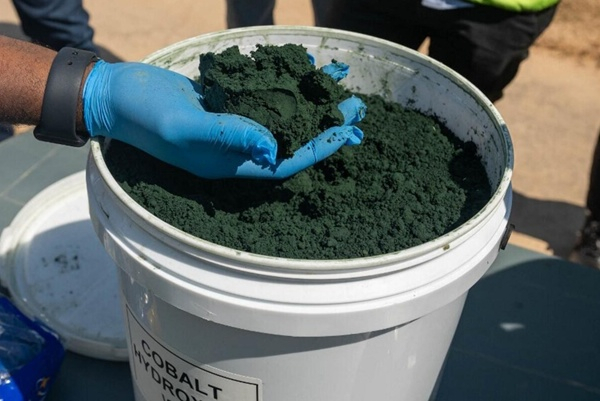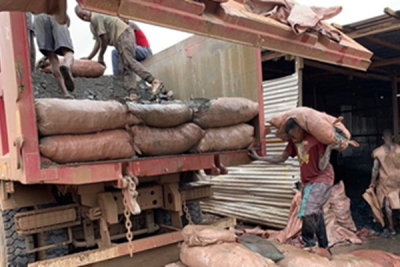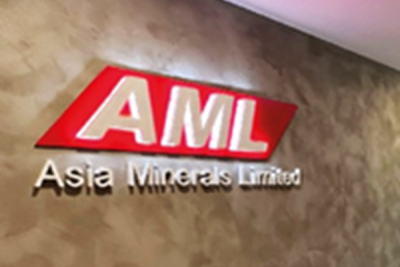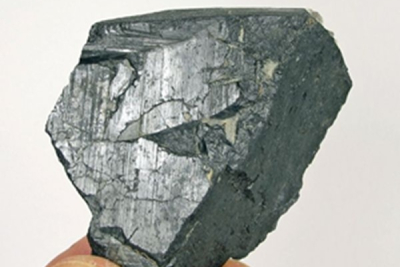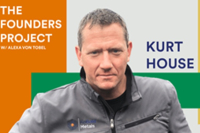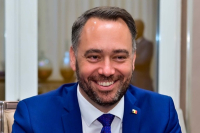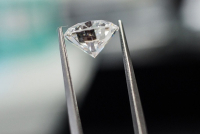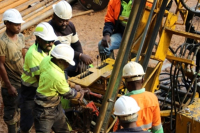
MINING (157)
Global demand for cobalt should grow faster than supply in the coming years, shifting the market from a surplus in 2024 to a deficit by the early 2030s. The Cobalt Institute disclosed the forecast in its annual report published on May 14, 2025.
The source, Cobalt Market Report 2024, forecasts an average annual growth in global demand of 7% by the decade’s end, reaching 400,000 tonnes by the early 2030s. This growth will be driven primarily by the rapid expansion of the electric battery sector.
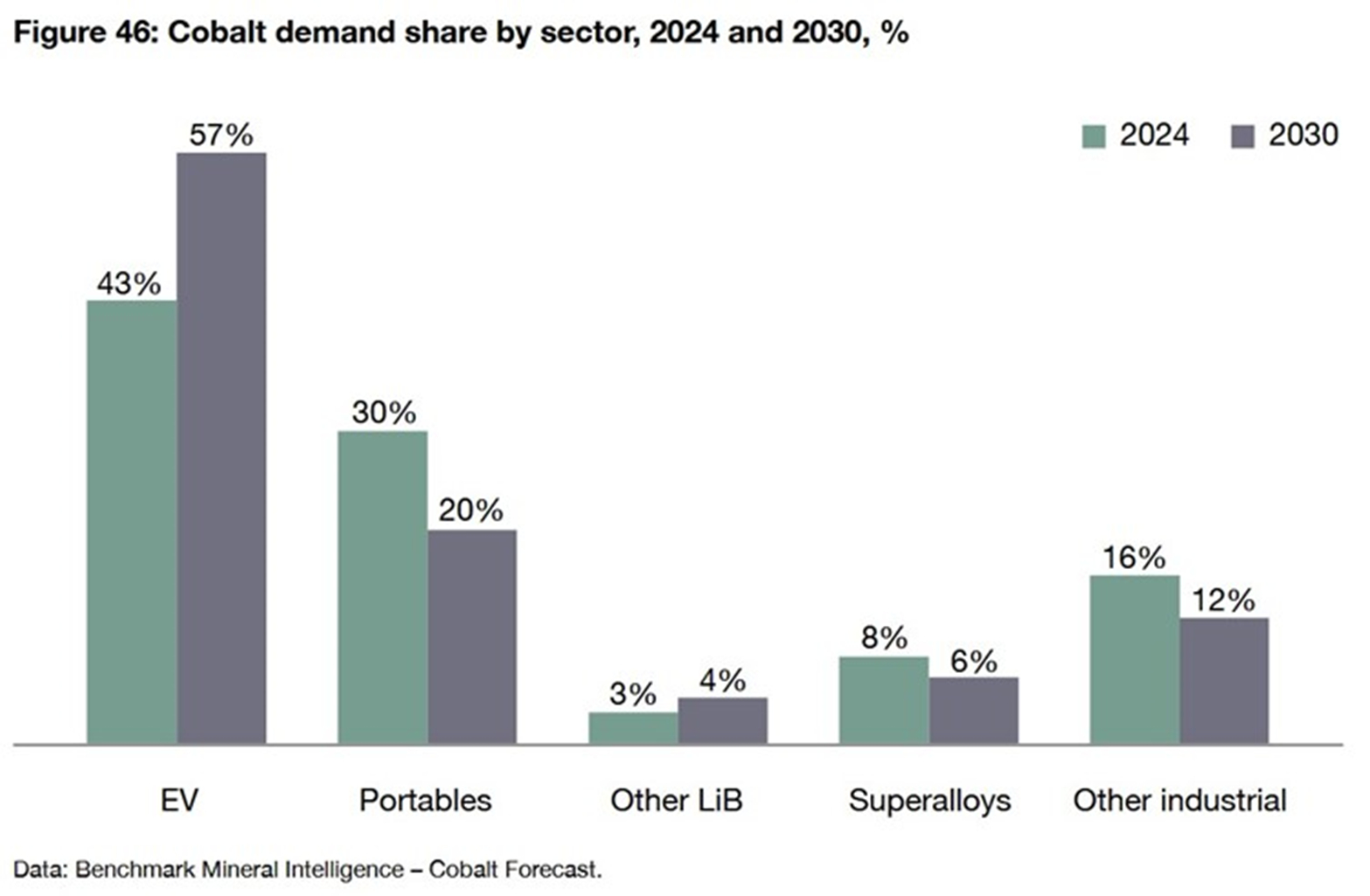
Meanwhile, global supply is expected to grow at an average annual rate of only 5% between now and 2030. The Democratic Republic of Congo (DRC), which accounted for 76% of primary supply in 2024, will see its share fall to 65%, while Indonesia’s share is expected to rise from 12% to 22% due to a rapid increase in production.

In the short term, market trends will largely depend on the strategy adopted by the DRC, particularly following the four-month ban on cobalt exports imposed in February 2025 to boost prices. This measure could be extended, but Kinshasa has not clarified its intentions. On March 14, the government announced plans to set export quotas and to cooperate with Indonesia to manage oversupply and better control prices. However, there is currently no information on how these decisions will be implemented.
Early this year, cobalt prices rebounded, spurred by the DRC’s export ban and an anticipated smaller surplus in the coming years. These conditions create a favorable backdrop for price recovery.
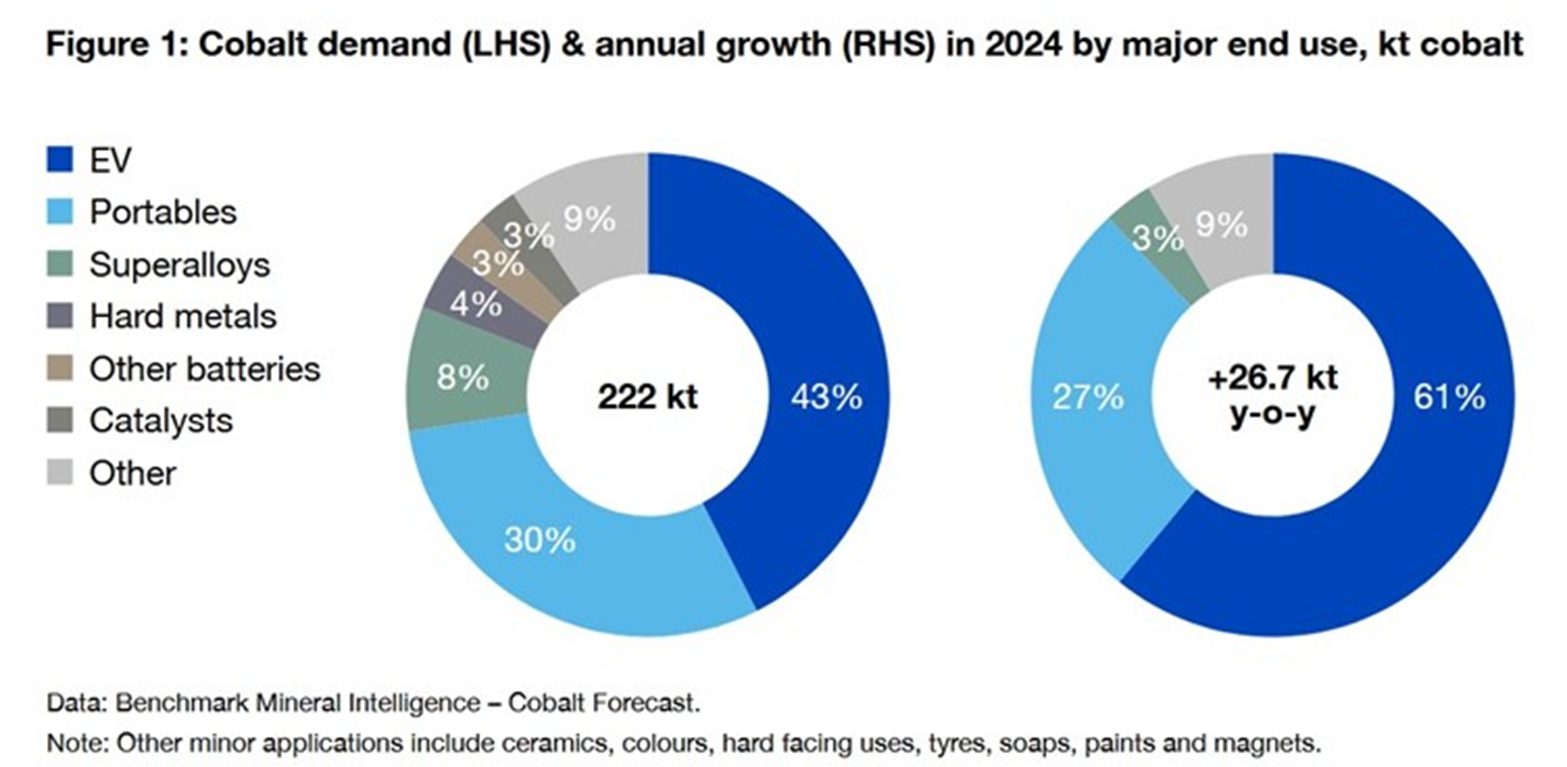
In 2024, global demand for cobalt rose by 14% to 222,000 tonnes. The electric battery segment was the main driver, accounting for 76% of total consumption and 94% of annual growth. Electric vehicles alone accounted for 43% of demand, with sales up 26%.
Demand for computers and mobile devices (phones, tablets, computers) also rose 12%. The rise of artificial intelligence, with its need for intensive computing, fueled an increase in battery capacity.
A surplus of 32,000 tonnes in 2024
Demand in the superalloys and military applications segments also grew, supported by rising defense spending.
But for the third consecutive year, supply growth outpaced demand. In 2024, global primary production reached 254,000 tonnes (+22% compared to 2023), driven by the ramp-up of Congolese mines operated by the Chinese group CMOC.
With 30,000 tonnes mined (+82% in one year), Indonesia established itself as the world’s second-largest producer. The market thus recorded a surplus of 32,000 tonnes in 2024—almost 15% of total demand—compared with 25,000 tonnes in 2023.
Founded in 1982, the Cobalt Institute brings together the main players in the cobalt value chain—including producers, users, recyclers, and traders—who represent around 80% of the global market.
This article was initially published in French by Walid Kéfi (Ecofin Agency)
Edited in English by Ola Schad Akinocho
Ivanhoe Mines has announced updated resource estimates for its Western Forelands exploration project in the Democratic Republic of Congo (DRC). The company, which holds between 45% and 100% of the permits covering this area, reports that the Makoko, Makoko West, and Kitoko deposits now total 8.38 million tonnes of copper in so-called "inferred" resources, almost double the volumes estimated in 2023.
These new estimates are based on 86,000 meters of drilling conducted between November 2023 and February 2025. Ivanhoe groups these three deposits under the name "district of Makoko," a 13 km-long area where copper occurs at depth, in geological formations similar to those mined at the nearby Kamoa-Kakula mine.
Overall, 494 million tonnes of ore at an average grade of 1.70% copper have been classified as inferred resources. This classification designates volumes whose presence is deemed probable, but not yet certified due to insufficient data. These resources offer strong potential but require additional drilling campaigns to be confirmed.
The district also includes 27.7 million tonnes of "indicated resources" at 2.79% copper, or 773,000 tonnes of metal. This category offers a more reliable estimate than inferred resources.
This exploration work is part of Ivanhoe's strategy to develop a second copper production center in the DRC. Faced with growing global demand driven by the energy transition, the company has been conducting an extensive prospecting campaign for several years in the Western Forelands region, adjacent to the Kamoa-Kakula mining complex.
The 2025 drilling program, with a budget of $50 million, includes over 100,000 meters of additional drilling. The results will enable a new resource update expected in 2026.
However, the publication of these figures does not mean that Ivanhoe will be opening a new mine in the short term. At this stage, the Makoko district remains an exploration project, still far from the feasibility, environmental study, and financing phases. However, its proximity to the existing Kamoa-Kakula infrastructure could facilitate future production. The company also points out that the area remains open to exploration, meaning that the potential identified could be further expanded in future campaigns.
This article was initially published in French by Louis-Nino Kansoun
Edited in English by Ola Schad Akinocho
Last year, 2% of the cobalt produced in the Democratic Republic of Congo (DRC) came from artisanal mines. The figure, disclosed in the Cobalt Institute’s annual report published on May 14, 2025, is significantly lower than the years before. According to various organizations, in recent years, artisanal mining contributed between 10% and 30% to the country’s overall output.
"In 2018, when cobalt metal prices had reached over $40 per pound, smallholders' share represented around 10% of DRC production. By 2024, with the significant increase in supply in the DRC [and globally], Benchmark estimates that this share has fallen to less than 2% of national production, or around 1% of global production," says the Cobalt Institute.
The report does not provide detailed volumes for artisanal production in recent years, making precise verification difficult. The Congolese Ministry of Mines does not differentiate cobalt production or exports by mining type, unlike other minerals like diamonds, gold, or tin.
The Cobalt Institute report attributes the drop mainly to: the boom in industrial cobalt production and the decline in cobalt prices. However, the Cobalt Institute suggests artisanal mining volumes may rise again in early 2025 following Kinshasa’s February export suspension, which caused cobalt prices to increase by over 50%.
Artisanal and small-scale mining (ASM) faces criticism for poor traceability, child labor, and human rights violations. Dinah McLeod, Executive Director of the Cobalt Institute, emphasizes that the challenge is not to eliminate artisanal mining but to make it fair, safe, and free from abuses, as it remains a vital source of employment for many in the region.
The current decline in artisanal activity, often illegal, underscores the need for rapid formalization. Formalizing the sector would enable stakeholders to better benefit from favorable market conditions expected in the early 2030s, when supply deficits may emerge.
This article was initially published in French by Emiliano Tossou
Edited in English by Ola Schad Akinocho
Asia Minerals Limited (AML) will start exploring for a manganese mine in Luozi, Kongo Central province, on May 21, 2025. The Minister of Mines presented the project during the May 9 Council of Ministers. AML is Japanese.
According to the Council’s minutes, the initiative falls under the Democratic Republic of Congo’s strategy to diversify the mining sector by broadening partnerships, expanding the range of ores mined, extending operational areas, and increasing the production of finished or semi-finished products. If exploration is successful, AML seeks to produce up to two million tonnes of manganese at the discovered asset.
The Minister of Mines requested government support to facilitate administrative procedures, provide institutional backing, and encourage the technical partnerships necessary for the project’s success. He highlighted that the Luozi project could serve as a lever for territorial, sectoral, and economic transformation, aligning with the DR Congo’s new vision for mining governance.
Founded in 1993 in Hong Kong, AML is an international company specializing in the entire manganese value chain, including mining, transformation into ferroalloys, and the production of metals and chemicals. The company has subsidiaries across Asia, Africa, Europe, the Commonwealth of Independent States (CIS), and North America.
AML also holds a majority stake in a ferroalloy smelter in Malaysia with an annual capacity of 220,000 tonnes, and a manganese mine in South Africa capable of producing two million tonnes per year.
This article was initially published in French by Boaz Kabeya (intern)
Edited in English by Ola Schad Akinocho
The Kibali mine in Haut-Uélé province, Democratic Republic of Congo (DRC), produced 141,000 ounces (4,384.6 kg) of gold in the first quarter of 2025, according to Barrick Mining’s quarterly report published on May 7. The output dropped 16% year-on-year and 20.3% compared to Q4 2024.
Barrick expects an output of 688,000–755,000 ounces this year. However, first-quarter results fall short of the quarterly average needed to meet this goal, estimated at 172,000 to 188,750 ounces. The company points to "higher grades for later in the year, mainly thanks to underground mining," but does not specify if this will be enough to meet annual targets.
In 2024, due to lower gold grades, Kibali delivered 688,000 ounces, 10% less than in 2023. Despite the decline, the mine’s contribution to Barrick’s sales rose by 30% to $316 million. Factoring in Barrick’s 45% stake, Kibali’s total sales are estimated at $702.2 million.
This revenue boost is attributed to the ongoing surge in gold prices. On April 22, the spot price of gold surpassed $3,500 an ounce for the first time, driven by Sino-American trade tensions and disputes between President Donald Trump and the Federal Reserve. JP Morgan, in a note published at the end of April, projected that gold prices could exceed $4,000 an ounce by 2026.
This article was initially published in French by Pierre Mukoko
Edited in English by Ola Schad Akinocho
Since January, tantalite prices have jumped 25%. According to Reuters, the ore currently trades between $100 and $105 per pound on the European spot market, the highest level seen since April 2023.
In February, data provider Argus had already revised its price estimates upward to $80–$88 per pound, up 8% from the previous range of $75 to $81.
The price rally was mainly spurred by lower supplies from the Democratic Republic of Congo (DRC). According to the United States Geological Survey (USGS), the DRC was the world’s leading tantalum producer in 2023, holding more than 41% of the global market. However, output remains volatile due to ongoing instability in several mining regions. This has only worsened since January 2025 with the advance of M23 rebels into key producer towns.
The conflict-induced instability disrupted supply chains, especially as buyers increasingly demand traceable and conflict-free material. “The conflict affecting eastern DRC makes it difficult to obtain legitimate labeled tantalite. [...] You can place an order for material in a province not affected by the conflict, and the rebels take control of the area within two weeks of signing an agreement,” an anonymous trader told Reuters.
Looking ahead, the situation remains uncertain. Stabilizing key production zones could ease supply pressures, but much will depend on the outcome of peace negotiations between Kinshasa, the M23 rebels, and Rwanda, the rebellion’s main supporter.
This article was initially published in French by Aurel Sèdjro Houenou (Ecofin Agency)
Edited in English by Ola Schad Akinocho
KoBold Metals, the U.S.-based mining company backed by heavyweight investors including Bill Gates and Jeff Bezos, is stepping up its campaign to secure rights to the Manono lithium deposit in the Democratic Republic of Congo (DRC), a site widely seen as having “the potential to become a large-scale, long-life lithium mine.” According to a January 2024 estimate, Manono could hold 669 million tonnes of resources grading 1.61% lithium.
On May 6, 2025, KoBold and Australia’s AVZ Minerals issued a joint statement titled Developing Manono for Peace and Prosperity, signed by their respective CEOs, Kurt House and Nigel Ferguson. The companies announced they had “reached consensus on a commercial framework to enable the rapid development of the Manono deposit.”
The statement specifies: “This framework provides for AVZ to cede its commercial interests in the Manono lithium deposit to KoBold, at fair value.” The document further claims this agreement would allow KoBold to “quickly” mobilize more than a billion dollars “to bring Manono’s lithium to Western markets.”
But the Congolese government maintains that AVZ no longer has any rights to Manono, arguing those rights were lost when state-owned Cominière terminated its partnership with AVZ in 2022. AVZ is contesting the move before the International Court of Arbitration of the International Chamber of Commerce, where it has already secured an order for Cominière to pay €39.1 million in penalties for non-compliance with injunctions. However, the tribunal has yet to rule on the core ownership issue.
KoBold’s January offer proposes to resolve the dispute by granting “appropriate compensation” to AVZ in exchange for relinquishing its claims on Manono. The company says it is prepared to develop the southern part of the deposit, while the northern section would remain under the control of the Chinese group Zijin Mining.
Manono Lithium SAS-a joint venture 61% owned by Zijin (via Jinxiang Lithium) and 39% by Cominière-was granted an operating permit in September 2024 for part of the deposit. The company plans to begin lithium production in the first quarter of 2026.
An offer for “peace and prosperity”
So far, Congolese authorities have not commented publicly on KoBold’s offer. The May 6 joint statement suggests no favorable response yet. “AVZ has undertaken to propose to the Congolese government a temporary suspension of the ICSID arbitration proceedings to facilitate discussions,” the document states.
KoBold and AVZ may be trying to pressure Kinshasa by leveraging the current warming of US-DRC relations, considering the May 6 statement, which reads: “AVZ and KoBold are cooperating with all stakeholders, including the US government, the DRC government, and AVZ’s current development partner.”
AVZ and KoBold frame their proposal as a contribution to “peace and prosperity,” promising “thousands of well-paying jobs for the Congolese, over several decades.”
Kinshasa recently offered the Trump administration a mining agreement in exchange for its support toward resolving the ongoing conflict in Eastern DRC. Since then, the issue has been the subject of bilateral discussions, and Washington is actively involved in the resolution process.
“A lasting peace in the eastern Democratic Republic of Congo will open the door to greater U.S. and Western citizen investment, which will create an ecosystem conducive to responsible and reliable supply chains for things like critical minerals,” declared US Secretary of State Marco Rubio on April 25, 2025, in Washington, at the signing of the “declaration of principles” for a peace agreement between the DRC and Rwanda, the main supporter of the M23 rebellion.
This article was initially published in French by Pierre Mukoko
Edited in English by Ola Schad Akinocho
Maxime Prévot, Belgium’s Foreign Affairs Minister, recently visited the Democratic Republic of Congo (DRC). During his stay, the European official told Congolese authorities about Belgian firms' readiness to support the DRC’s mining sector by providing their expertise. The DRC is a former colony of Belgium.
"We have globally recognized expertise through players like Umicore and John Cockerill, which can handle all of these rare critical materials. And so, if the opportunity arises to also be able to be an investment partner, there's no reason for us to rule it out," Prévot told a press conference on April 28, 2025, after meeting with Prime Minister Judith Suminwa Tuluka, and President Félix Antoine Tshisekedi.
Already, there is Umicore, a Belgian company, helping Gécamine, the DRC’s state-owned mining company. In 2024, the two signed a deal under which Umicore refines germanium concentrates from the Big Hill tailings site in Lubumbashi. In October 2024, Gécamine announced its first exports to Belgium, as part of its goal to supply up to 30% of the world's germanium needs.
Belgium is a preferred destination for Congolese diamonds, thanks in particular to the city of Antwerp, a world center for the diamond trade. In 2024, statistics published by the Ministry of Mines show that the DRC exported 4.1 million carats to Belgium, worth $42.03 million. The kingdom thus accounts for 44% of Congolese diamond exports, outstripped only by the United Arab Emirates, which imported 4.9 million carats for $44.9 million.
To offset China’s dominant presence in its mining industry, the DRC has been seeking new investors. Discussions are already underway with the United States, following a "minerals for security" exchange proposal made by Kinshasa. Since then, Washington has been heavily involved in resolving the conflict in eastern DRC.
"Belgium has at no time conceived its mission, through my presence, in a move aimed at exploiting any resource of the DRC. We are obviously observing the motivations of other international players who may sometimes have a more transactional approach to their diplomacy. We are here first and foremost because there is a suffering population and principles of international law to uphold," commented Maxime Prévot.
Within the European Union, Brussels currently appears to be Kinshasa's main ally in the conflict in eastern DRC. In retaliation, Rwanda has suspended diplomatic relations with the kingdom.
This article was initially published in French by Pierre Mukoko
Edited in English by Ola Schad Akinocho
The diamond market is going through a major crisis, marked by a prolonged drop in demand, due in particular to the growing popularity of synthetic diamonds. This has led to a significant fall in prices. Several corroborating sources say prices have fallen by over 25% since 2022.
The trend is reflected in the average export price from the Democratic Republic of Congo (DRC). According to official data, it has fallen from $12.5 per carat in 2022 to $9.6 in 2024, a drop of 23.2%.
This situation further complicates the recovery of Société minière de Bakwanga (Miba), which has been in difficulty for over twenty years. The turnaround strategy is based on the potential of the polygon, Miba's historic concession, which still harbors significant diamond deposits.
On April 8, Miba CEO André Kabanda introduced four South African companies- Bond Equipment, Mining Services, Athur Mining, and Consulmet-"interested" in working together to revive the business. These companies are due to submit bids for the supply of modern equipment after visiting the mining infrastructure and sites. However, the continuing fall in prices could dampen investor enthusiasm.
Conditions for a Relaunch
Appointed Chairman of the Board in November 2023, Jean-Charles Okoto undertook a tour of Europe in late 2024 to attract new partners. On this occasion, ASA Resource, a 20% shareholder, pledged to invest $50 million in the relaunch. To date, however, it remains unclear whether this contribution has been made.
While Miba's ambition was to produce 12 million carats by 2025, its activities remain suspended.
Miba's situation reflects that of the sector as a whole. Since 2017, recorded national production has fallen from 17.9 million to 9.2 million carats in 2024.
"Relaunching the sector requires structural reforms to enhance transparency, support artisanal mining, attract industrial investment, and ensure that diamond wealth truly benefits local populations," argues IPIS, a research organization based in Antwerp, in a report published on April 23, 2025.
According to the USGS, the DRC holds around 150 million carats, or 9% of the world's known industrial-grade diamond reserves.
This article was initially published in French by Pierre Mukoko
Edited in English by Ola Schad Akinocho
On April 24, 2025, Rome Resources announced plans to resume drilling at its Bisie North tin project in eastern DRC, after suspending activities on March 14 due to security concerns.
The company aims to begin drilling within 10 days, targeting high-grade tin deposits at depth. This phase is budgeted at $1.6 million, funded from Rome’s $2.7 million cash reserves.
The decision follows the M23 rebel group’s withdrawal from the region and Alphamin Resources’ April 9 announcement to gradually restart production at the nearby Bisie mine, which had also paused in March.
#RMR Drilling Restart at Bisie North
— Rome_Resources (@Rome_Resources) April 24, 2025
🔹Mobilisation to site by 1 May, drilling to resume thereafter
🔹M23 rebel withdrawal enables operations restart across region
🎯Fully funded programme targets higher-grade #Tin at depth
🔹Results from MADD024/026 expected within 2 weeks
Located about 280 km west of Goma near the key mining hub of Walikale-centre, the Bisie site saw rebel occupation between March 19 and April 3 before the Congolese army reclaimed control. Rebels reportedly retreated over 130 km east to Nyabiondo and Masisi.
Political progress adds to optimism: on April 23, the government and M23 declared their intent to agree on a truce, while on April 25, the DRC and Rwanda signed a “declaration of principles” in Washington, signaling a step toward peace.
Rome Resources expects to publish initial resource estimates for its Mont Agoma and Kalayi prospects by the end of May 2025. The market eagerly awaits these results.
This article was initially in French by Pierre Mukoko (Ecofin Agency)
Edited in English by Ola Schad Akinocho
More...
Gold prices could soar past $4,000 per ounce in 2026, according to a JP Morgan note published April 22, 2025. The American bank attributes its bullish forecast to rising recession risks in the US and ongoing trade tensions between Washington and Beijing.
JP Morgan expects gold to average $3,675/oz by Q4 2025, climbing above $4,000 in the second quarter of 2026. The bank warns prices could break these thresholds even sooner if demand outpaces expectations.
While global prices are set to surge, gold production in the DRC is heading the other way. In 2024, the Kibali mine—DRC’s main industrial gold site—produced 686,000 ounces, down 10% from 763,000 ounces in 2023, marking its lowest output since 2019, when production hit 813,000 ounces.
The artisanal sector is faring even worse: official gold exports plunged 66% in 2024, from 5.18 tonnes to just 1.75 tonnes. The outlook for 2025 remains bleak, with state-owned DRC Gold Trading SA struggling to operate amid persistent security tensions in the east, fueling smuggling and choking off legal exports.
Demand Up
If gold production in the DRC keeps falling, the country could miss out on the price surge. Being one of the world’s major producers, if its output keeps lowering, prices could remain high.
JP Morgan highlights strong demand from investors and central banks, expected to average 710 tonnes per quarter this year..
On April 22, 2025, gold’s spot price broke $3,500 per ounce for the first time, driven by US-China trade tensions and friction between President Trump and the Federal Reserve. Trump’s pressure to cut interest rates is fueling gold’s rise.
Historically, gold prices move in the opposite direction to interest rates. When rates fall, bonds lose appeal and gold’s safe-haven status strengthens, especially amid geopolitical uncertainty.
The dollar’s fall against the euro, hitting a three-year low, further boosts gold’s appeal as a protective asset.
In early April, Goldman Sachs raised its forecast to $3,700 per ounce by end-2025, up from $3,300, and even suggested gold could reach $4,500 in extreme cases.
This article was initially published in French by Pierre Mukoko (Ecofin Agency)
Edited in English by Ola Schad Akinocho
This year, Alphamin Resources anticipates an output of 17,500 tons at its Bisie tin mine in the Democratic Republic of Congo (DRC). The figure is down 14.2% compared to the previous forecast of 20,000 tons. The firm issued the revised target in a statement dated April 17.
In the official statement, Alphamin attributed its decision to a “security-related interruption.”
Operations were temporarily halted on March 13 due to the advancing M23 rebel group and their Rwandan allies, raising safety concerns for employees and subcontractors. Production subsequently plummeted by 18.4% in Q1 2025 compared to Q4 2024, dropping from 5,237 to 4,270 tonnes.
Despite the rebels’ proximity, Alphamin resumed processing stockpiled ore on April 15. Mining activities are set to gradually restart this month, with staff and logistics providers—including those handling equipment and tin transport—returning to the site.
However, reaching the revised production goal depends heavily on the security situation. Peace talks between the Congolese government and M23 rebels began in Doha under Qatar’s mediation, but no major progress has yet been reported.
This article was initially published in French by Pierre Mukoko
Edited in English by Ola Schad Akinocho
At its April 11 Council of Ministers meeting, the Democratic Republic of Congo (DRC) adopted a draft decree granting petroleum rights directly to the state-owned Société Nationale des Hydrocarbures du Congo (Sonahydroc). The decree outlines the legal and fiscal framework for this transfer, in line with the 1 August 2015 oil and gas law.
This move is part of the DRC’s renewed strategy to revive exploration and ramp up oil production, aiming to better harness its resource potential. The plan includes “immediately” awarding Sonahydroc petroleum rights for blocks 1 and 2 in the Albertine Graben through service contracts.
Service contracts offer more attractive tax terms than production sharing agreements and avoid signing bonuses, making them a favored tool to attract foreign investors. Once awarded, Sonahydroc will develop these blocks in partnership with local and international companies.
Since July 2022, the DRC has sought partners to exploit 27 oil blocks. After canceling a tender in October 2024, the oil and gas Minister announced a relaunch for early 2025, prioritizing “restricted tenders for strategic blocks.”
However, this direct allocation to Sonahydroc marks a shift toward greater state control, echoing Prime Minister Judith Suminwa’s call for tighter organization of block distribution and a stronger role for the government in the oil sector.
Estimates of DRC’s reserves vary wildly: the presidency cites 22 billion barrels across 27 blocks; other sources suggest around 5 billion barrels; while the CIA World Factbook lists proven reserves at just 180 million barrels.
This article was initially published in French by Ronsard Luabeya (intern)
Edited in English by Ola Schad Akinocho
On April 14, 2025, Katamba Mining, 70% owned by China’s Zijin Mining, launched a tender to hire a subcontractor to build and operate a crushing plant. The facility will produce gravel and sand for the Mpiana-Mwanga III hydroelectric project, located over 90 km northeast of Manono in Tanganyika province. Interested companies have until April 22 to submit bids.
The hired company will set up temporary infrastructure, build a production system, mobilize equipment and personnel, site logistics, transport materials, ensure waste disposal, produce technical reports, and carry out maintenance works.
This project follows the recent rehabilitation of the first two phases of the nearly century-old plant, idle since 1998. Katamba Mining invested $80 million to restore the facility and boost its capacity by 30%, raising it to 40 MW as announced in December 2024. However, during a March 2025 site visit, MP John Banza Lunda noted that only the first unit is operational, delivering 4 MW.
Details remain sparse, but last January, Katamba’s second-largest shareholder, Congolaise d’Exploitation Minière (Cominière), estimated the new plant’s capacity at around 150 MW, with the entire complex eventually nearing 200 MW.
Powering Manono Mine
According to the recently launched tender, work on the crushing plant is scheduled from May 1, 2025, to January 31, 2027. “Recommissioning Mpiana-Mwanga as a renewable energy source secures power for Manono mine, local processing plants, and communities,” said Zijin Mining VP James Wang at the end of the rehabilitation works.
The power upgrade supports Manono, home to one of the world’s largest high-grade lithium deposits. Zijin aims to start production in Q1 2026.
Rehabilitation of Mpiana-Mwanga was part of a feasibility study by AVZ Minerals, Cominière’s former partner until 2022. The joint venture, controlled by the Australian company, was close to securing a mining permit when disputes escalated. AVZ is now contesting the matter before the International Court of Arbitration.
This article was initially published in French by Pierre Mukoko and Ronsard Luabeya (intern)
Edited in English by Ola Schad Akinocho






